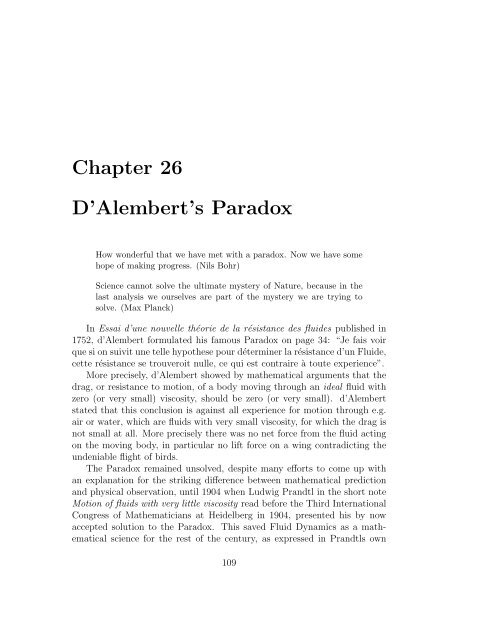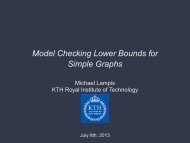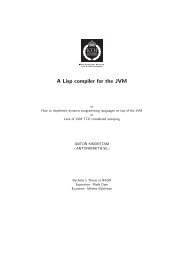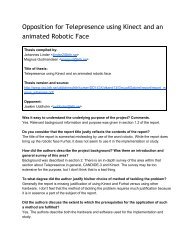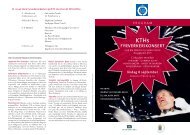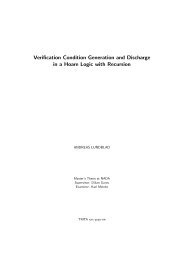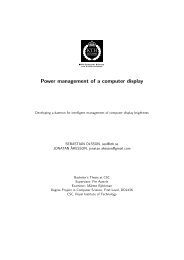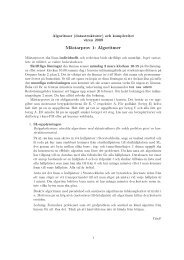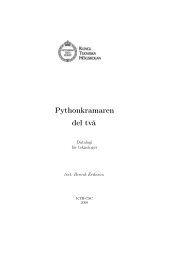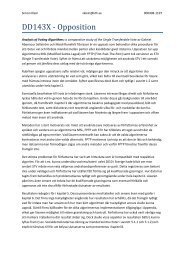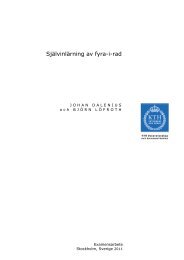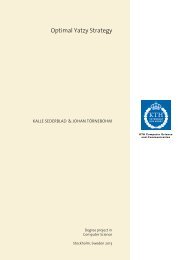Dr Faustus of Modern Physics - Department of Speech, Music and ...
Dr Faustus of Modern Physics - Department of Speech, Music and ...
Dr Faustus of Modern Physics - Department of Speech, Music and ...
Create successful ePaper yourself
Turn your PDF publications into a flip-book with our unique Google optimized e-Paper software.
Chapter 26<br />
D’Alembert’s Paradox<br />
How wonderful that we have met with a paradox. Now we have some<br />
hope <strong>of</strong> making progress. (Nils Bohr)<br />
Science cannot solve the ultimate mystery <strong>of</strong> Nature, because in the<br />
last analysis we ourselves are part <strong>of</strong> the mystery we are trying to<br />
solve. (Max Planck)<br />
In Essai d’une nouvelle théorie de la résistance des fluides published in<br />
1752, d’Alembert formulated his famous Paradox on page 34: “Je fais voir<br />
que si on suivit une telle hypothese pour déterminer la résistance d’un Fluide,<br />
cette résistance se trouveroit nulle, ce qui est contraire à toute experience”.<br />
More precisely, d’Alembert showed by mathematical arguments that the<br />
drag, or resistance to motion, <strong>of</strong> a body moving through an ideal fluid with<br />
zero (or very small) viscosity, should be zero (or very small). d’Alembert<br />
stated that this conclusion is against all experience for motion through e.g.<br />
air or water, which are fluids with very small viscosity, for which the drag is<br />
not small at all. More precisely there was no net force from the fluid acting<br />
on the moving body, in particular no lift force on a wing contradicting the<br />
undeniable flight <strong>of</strong> birds.<br />
The Paradox remained unsolved, despite many efforts to come up with<br />
an explanation for the striking difference between mathematical prediction<br />
<strong>and</strong> physical observation, until 1904 when Ludwig Pr<strong>and</strong>tl in the short note<br />
Motion <strong>of</strong> fluids with very little viscosity read before the Third International<br />
Congress <strong>of</strong> Mathematicians at Heidelberg in 1904, presented his by now<br />
accepted solution to the Paradox. This saved Fluid Dynamics as a mathematical<br />
science for the rest <strong>of</strong> the century, as expressed in Pr<strong>and</strong>tls own<br />
109


